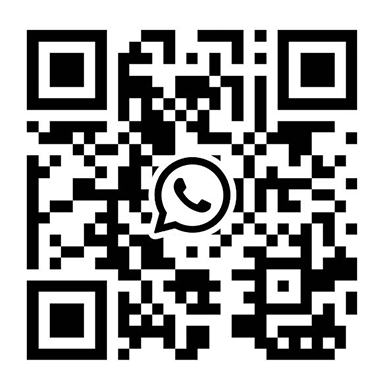In the globalized world of medical procurement, purchasing managers often source high-precision ophthalmic equipment from international suppliers. While this opens access to advanced technologies and competitive pricing, it also introduces a complex layer of import duties, customs regulations, and tariff classifications.
To avoid unexpected costs, shipment delays, or regulatory non-compliance, it’s essential that purchasing managers understand how to accurately verify import duties before finalizing any international purchase.
This expert guide will walk you through the step-by-step process of verifying import duties for ophthalmic devices, including tools, resources, and best practices.
🌍 Why Verifying Import Duties Matters
Import duties—also known as customs tariffs—are taxes imposed by a country on goods brought in from abroad. These duties can significantly affect the total landed cost of ophthalmic equipment and must be factored into procurement budgets and timelines.
Consequences of not verifying duties:
- Unexpected cost overruns
- Customs clearance delays
- Fines or penalties for misclassification
- Delayed delivery of critical medical devices
🧭 Step-by-Step Guide to Verifying Import Duties
1. Identify the Correct HS Code
The Harmonized System (HS) Code is a standardized numerical method of classifying traded products. Every type of ophthalmic equipment has a specific HS code that determines its duty rate.
Common HS codes for ophthalmic equipment:
| Equipment Type | HS Code |
|---|---|
| Slit Lamps | 9018.50 |
| Optical Coherence Tomography | 9018.19 |
| Autorefractors | 9018.50 |
| Surgical Microscopes | 9018.90 |
| Diagnostic Lenses | 9001.50 |
🔗 Use the World Customs Organization HS Code Lookup to find the right code.
2. Check the Country of Import
Import duties vary depending on the destination country. Once you have the HS code, consult the customs authority of the importing country to determine the applicable duty rate.
Useful resources by country:
- 🇺🇸 U.S. Harmonized Tariff Schedule (HTS)
- 🇬🇧 UK Global Tariff
- 🇨🇦 Canada Tariff Finder
- 🇪🇺 EU TARIC Database
- 🇦🇺 Australian Tariff Classification
3. Determine the Country of Origin
Many countries have preferential trade agreements that reduce or eliminate import duties for specific countries. For example:
- Ophthalmic equipment from the EU may enter the U.S. duty-free under certain conditions.
- Products from ASEAN countries may benefit from reduced tariffs in Asia-Pacific regions.
🔍 Check if your supplier’s country has a Free Trade Agreement (FTA) with your country using the WTO Regional Trade Agreements Database.
4. Use a Customs Broker or Trade Compliance Consultant
For high-value or complex shipments, it’s wise to work with a licensed customs broker or trade compliance expert. They can:
- Ensure correct HS code classification
- Calculate total duties, taxes, and fees
- Prepare required documentation
- Liaise with customs officials
📞 Find a licensed broker via the National Customs Brokers & Forwarders Association of America (NCBFAA).
5. Use Online Duty Calculators
Several platforms offer real-time import duty calculators based on HS codes, country of origin, and destination.
Top tools:
🧾 What Other Costs Should Be Considered?
In addition to import duties, the purchasing manager should account for:
- Value-Added Tax (VAT) or Goods and Services Tax (GST)
- Customs processing fees
- Brokerage fees
- Port handling charges
- Inspection and quarantine fees (if applicable)
These can be bundled into the Total Landed Cost (TLC), which represents the full cost of getting the product to your facility.
📑 Documentation Required for Duty Verification
To ensure accurate duty assessment, the following documents are typically required:
- Commercial Invoice
- Packing List
- Bill of Lading or Air Waybill
- Certificate of Origin
- Import License (if applicable)
📌 Pro Tip: Always request a Certificate of Origin from your supplier to qualify for preferential duty rates under trade agreements.
📦 Example: Verifying Duties for an OCT Machine Imported to the U.S.
Let’s say you’re importing an OCT system from Germany to the United States.
- HS Code: 9018.19
- Country of Origin: Germany
- Destination Country: United States
- FTA: Covered under the U.S.–EU Trade Agreement
- Duty Rate: 0% (as per HTSUS)
✅ Result: No import duty is applied, but you may still incur customs processing and brokerage fees.
🛡️ Best Practices for Purchasing Managers
- Verify HS codes with multiple sources to avoid misclassification
- Document all duty calculations for audit trails
- Include duties in your procurement budget
- Negotiate Incoterms (e.g., DDP vs. FOB) to clarify who pays duties
- Stay updated on tariff changes due to geopolitical shifts
❓ Frequently Asked Questions (FAQ)
1. Can import duties change after I place an order?
Yes. Duties can change due to new trade policies, tariffs, or sanctions. Always verify rates at the time of shipment, not just at the time of order.
2. What happens if I use the wrong HS code?
Misclassification can lead to:
- Overpayment or underpayment of duties
- Customs delays
- Fines or penalties
- Seizure of goods
Always consult with a customs broker or use official databases.
3. Are all ophthalmic devices duty-free?
No. While many diagnostic and surgical devices may be duty-free under certain agreements, others—like accessories or consumables—may still incur duties.
4. Can I appeal an import duty decision?
Yes. If you believe your goods were misclassified or overcharged, you can file a protest or appeal with your country’s customs authority.
5. How often should I review import duty regulations?
At least quarterly, or whenever you:
- Change suppliers
- Import a new product
- Enter a new market
- Hear of geopolitical changes
📌 Final Thoughts
Verifying import duties for ophthalmic equipment is a critical step in ensuring cost-effective, compliant, and timely procurement. By mastering HS code classification, leveraging trade agreements, and using the right tools and partners, purchasing managers can avoid costly surprises and streamline international sourcing.
In a field where precision and timing are everything, duty verification is not optional—it’s essential.

